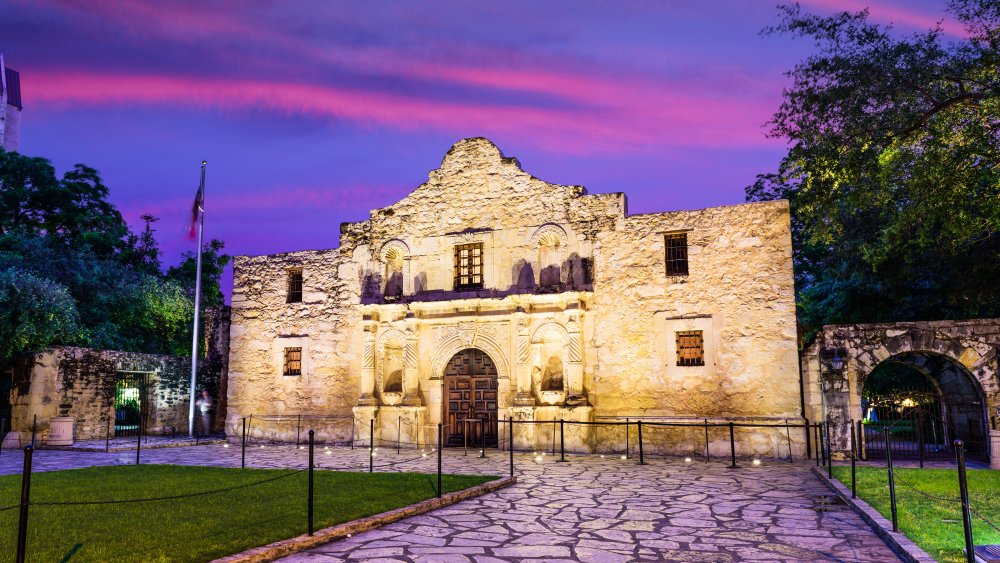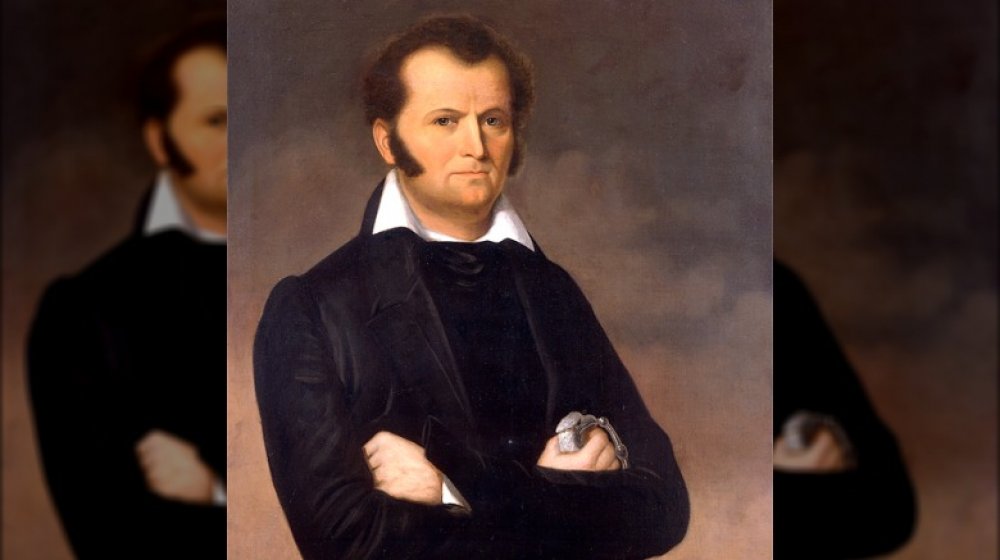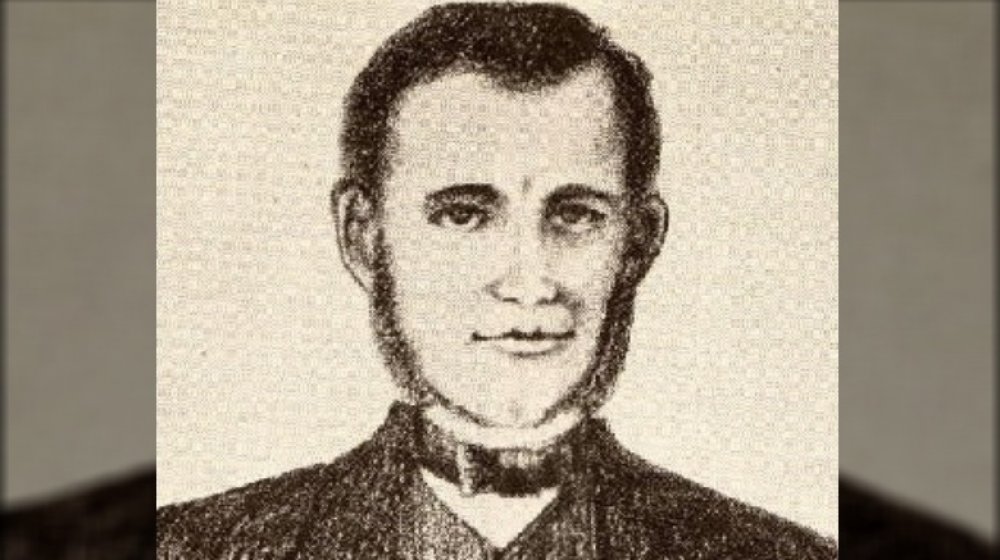What Happened To The Slaves At The Alamo?
"Republic. I like the sound of the word," John Wayne's Davy Crockett lectures Laurence Harvey as William Travis in The Alamo. "It means people can live free. Talk free. Come or go, buy or sell, drunk or sober, or however they choose." Nifty speech, and since Wayne was directing he got to say it any way he wanted. It fits in nicely with a narrative that the United States has always been and continues to be dedicated to principles like individual responsibility and freedom. As a nation we're finally reexamining that narrative and acknowledging that it's all very well and good, as far as it goes, but for too long it hasn't gone far enough.
Part of the narrative of the 1836 Battle of the Alamo is that the defenders were there to liberate Texas from the tyranny of Mexico. One of the points that often gets lost amid the flag-waving and coonskin caps is that by the time of the Texas Revolution, Mexico had abolished slavery, and Texas hadn't. Mexico abolished slavery in 1829, as History tells us, but made some exceptions in Texas — for instance, slaves whose master had died with no heirs would be freed (providing they hadn't actually killed their masters, though who could blame them?). Slaves could not be imported. Immigrants to Texas usually came from the South and brought slaves with them to work their agricultural enterprises, says History News Network, but if slavery was outlawed?
Jim Bowie made a living selling slaves
We know that there were slaves within the Alamo fortress for the 13-day siege that resulted in the death of the entire garrison. Jim Bowie, the famous knife fighter and all-around badass (look up The Sandbar Fight sometime) made a tidy sum dealing in slaves in the years before the Alamo, says Smithsonian, and brought at least two with him into the fort, a man named Sam and a woman named Bettie. Per The New Yorker, we know Davy Crockett owned slaves back home in Tennessee, though there's no record of his slaves accompanying him to Texas. Part of the problem with the historical record is that slaves weren't necessarily accounted for by name. They might be considered as servants, or not considered at all. In point of fact, there's large disagreement about how many men Travis commanded at the fort, anywhere from 182-250.
The third big name at the Alamo, the commander of the force, William Barret Travis, had at least one slave with him, Joe. And while the entire defending force was annihilated in the final assault and its aftermath, Joe survived, and his accounts of the siege and final battle form the basis of much of what we know about the Alamo from inside the fort. Joe was on the wall with Travis during the final battle and saw Travis die. Joe took cover and continued fighting until the battle was over, when he presented himself and, as a slave, his life was spared.
Joe, the slave of William Barret Travis, was one of the few surviving Alamo eyewitnesses
In addition to Joe, slaves Bettie, Sam, and Charlie left the Alamo alive. Todd Hansen, editor of The Alamo Reader, found an account of Bettie staying with the Mexican troops at first, but later working as a servant and fleeing to Mexico to avoid being enslaved again in Texas. Sam and Charlie disappear.
Joe traveled with one of the widows, Susanna Dickinson, and her young daughter, to the other Texian forces. Their accounts provided much of the backbone of what was known about the Alamo. Although Dickinson would eventually be sought out as an important witness, says Houston Public Media, Joe slipped away. Even without trying, people of color tended to fade into the obscurity of history. It's generally believed that Joe left Texas to return to Travis's family in Alabama and lived with them for many years. There's also some evidence that at one point in his later years he returned to Texas and perhaps even visited the old fortress where he nearly died. There have been references to Joe over the years, particularly his eyewitness account of the battle, but only recently have researchers uncovered a significant amount of his history for the 2015 book Joe: The Slave Who Became an Alamo Legend, by Ron J. Jackson and Lee Spencer White. When and where did he die? Did he die free?
Because of Joe, a slave, we can remember as much as we do about the Alamo.


